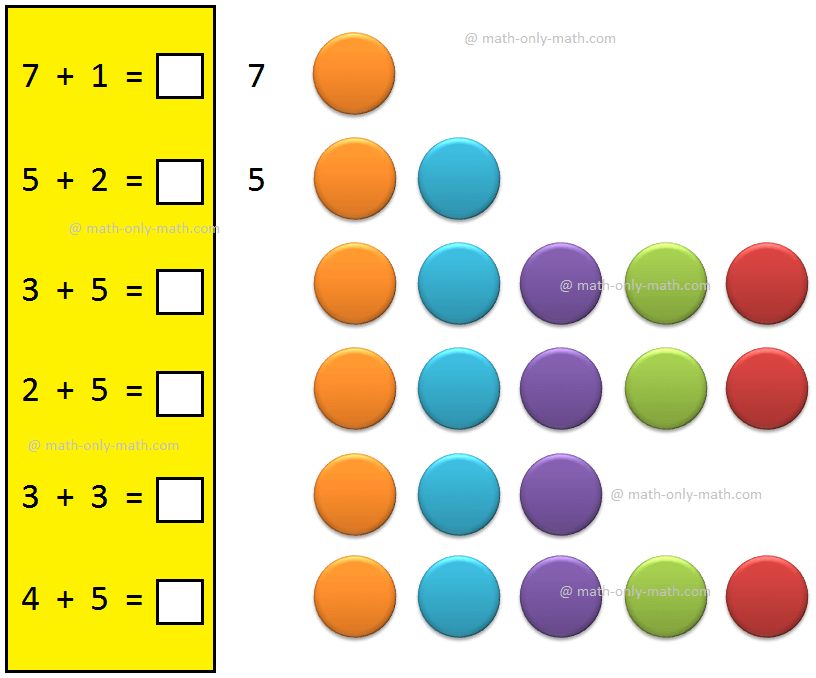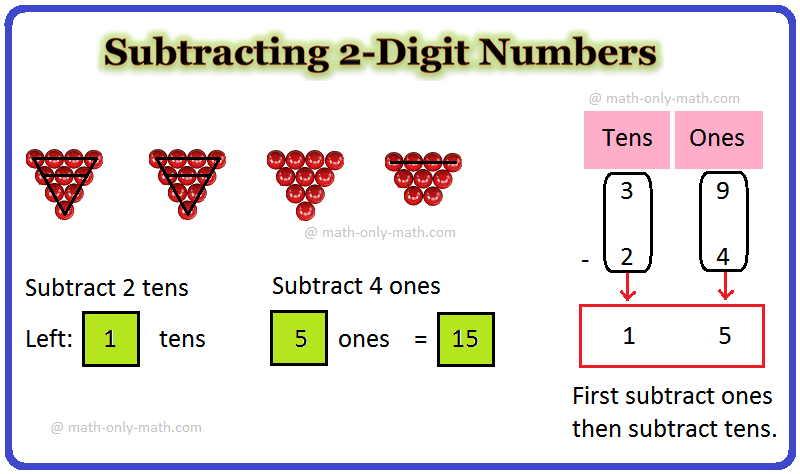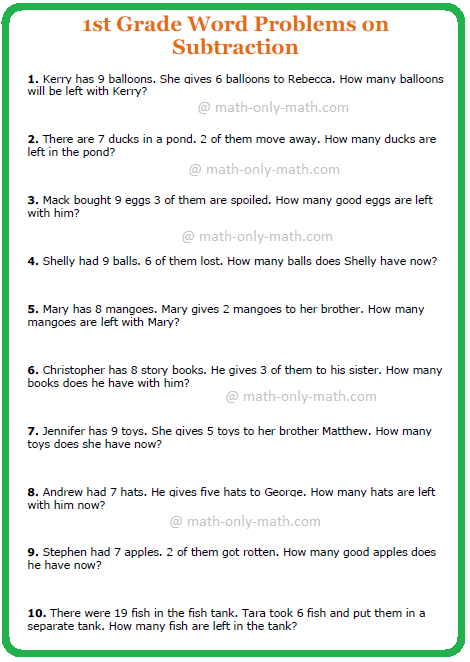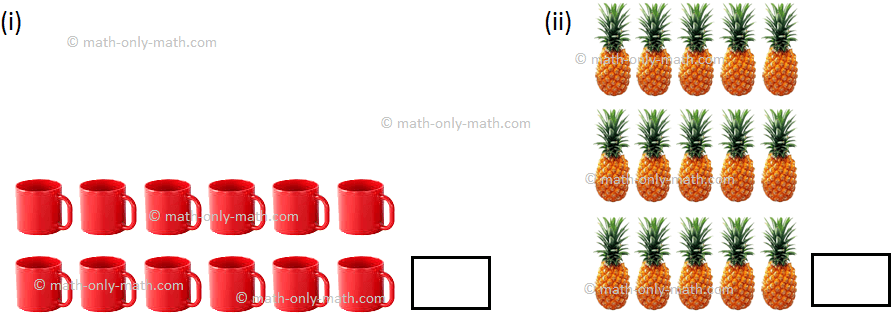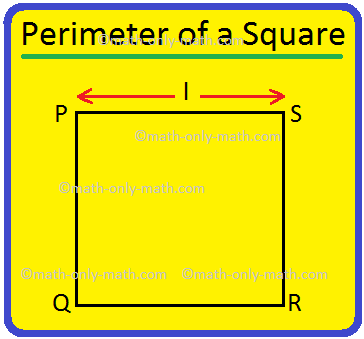4th Grade Math Activities
In 4th grade math activities we will practice all types of examples on different topics along with the solutions. The program is designed in such a way that it is helpful and encouraging for fourth grade homeschool curriculum, for after school academic enrichment activities, for extra-curricular activities, for learning disorder, for summer study program, etc,.
Keeping in mind the mental level of child in 4th grade, every efforts has been made to introduce new concepts in a simple language, 4th grade math lessons are arranged in such a way that students can understand them easily. The difficulty level of the 4th grade math word problems has been reduced and mathematical concepts have been explained in the simplest possible way along with different pictures. Each topic contains a large number of examples to understand the application of the concepts.
In 4th grade math tests we need to get prepare in these topics; Simple Shapes and Circle, Formation of Numbers, Factors and Multiple, Fractions, Addition, Subtraction, Multiplication, Division, Patterns and Mental Mathematics, Measurement of Length, Measurement of Mass, Measurement of Capacity, Measurement of Time, Consumer Math, Pictographs, etc….. If student follow math-only-math they can improve their knowledge by practicing numerous worksheet provided for fourth graders at 4th Grade Math worksheets which will help them to score.The practice sheets and sample lessons in this site are explained beautifully to built on youth development program and research on effective instruction on mathematics. We encourage the students to consider math standards as a resource and inspiration for 4th graders to follow the lesson planning along with the assignments
Fourth Grade Math Lessons – Table of Contents
4th Grade Numbers
Moving Towards Large Number
Read, write, count, number names, formation of the numbers from 0 to 99,999, representing numbers on spike abacus and identify, comparison, order, arranging, represent estimates or place value and face value of a digit, expanded form, standard form; rounding numbers.
Formation of Numbers: Learn how to form numbers having different numbers of digits and also how to use abacus in forming numbers.
Finding Out the Numbers: Learn how to find largest and smallest number in different digits of numbers.
Names of the Numbers: Learn how to read and write the names of the number by separating the digits according to the period of the digits.
Numbers Showing on Spike Abacus: Learn how to represent a number on a spike abacus according to the place value of a number.
1 Digit Number on Spike Abacus: How to represent one digit number (0 to 9) on a spike abacus?
2 Digits Number on Spike Abacus: How to represent two digit numbers (10 to 99) on a spike abacus?
3 Digits Number on Spike Abacus: How to represent three digit numbers (100 to 999) on a spike abacus?
4 Digits Number on Spike Abacus: How to represent four digit numbers (1000 to 9999) on a spike abacus?
5 Digits Number on Spike Abacus: How to represent five digit numbers (10000 to 99999) on a spike abacus?
Numbers from Ten Thousand to One Lakh
Large Number: Learn how to read and write the names of the large numbers according to the place value of a digit in a number.
Place Value Chart: Learn how the place value chart represents the place value of the digits of a number.
International Place-Value Chart:
Place Value and Face Value : Learn how to read, write and identify the place value of each digit in a number.
Problems Related to Place Value: With the help of worked-out examples learn how to find the different types of problems on place value and face value of a digit in the number.
Expanded form of a Number: Learn how to expand the form of a number in different ways.
Standard Form: How to convert the expanded form of a number to its standard form.
Comparison of Numbers: Learn how to compare the two numbers by using the symbols or sign like greater than (>), less than (<), equal to (=).
Example on Comparison of Numbers: How to compare and arrange numbers according to ascending or descending order?
Successor and Predecessor of a Whole Number: What is successor and predecessor of a number? Explained with examples.
Arranging Numbers: Learn how to arrange numbers in ascending order and descending order.
Formation of Numbers with the Given Digits: Understand how to form different numbers with the given digits without any repetition of digit.
Formation of Greatest and Smallest Numbers: Brief description on how to form greatest and smallest number using the given digits.
Examples on the Formation of Greatest and the Smallest Number: How to form greatest and smallest number using the given digits according to the condition.
Rounding off Numbers: Learn how to round the numbers to the nearest multiple of 10.
International Numbering System:
Expressing Numbers on the Number Line:
Expressing Numbers in the Expanded Form:
Expressing Place Value and Face Value:
Multiplier by 10, 100, 1000, 10000:
Dividend, Divisor, Quotient and Remainder:
Divide by 10, 100 and 1000 Divisors:
Worksheet on International Numbering System:
Worksheet on Indian Numbering System:
Worksheet on Numbering Systems:
Worksheet on Word Problems on Expressing Numbers:
Worksheet on Word Problems on Addendum:
Worksheet on Word Problems on Minuend and Subtrahend:
Worksheet on Minuend and Subtrahend:
Worksheet on Multiplicand and Multiplier:
Worksheet on Dividend, Divisor, Quotient and Remainder:
Worksheet on Divide by 2-digit Divisors:
Worksheet on Divide by 10, 100 and 1000 Divisors:
Worksheet on Division Problems by 2-digit Divisors:
Worksheet on Sum, Difference, Product, Quotient:
Worksheet on Word Problems on Four Operations:
Worksheet on Addition of Hours, Minutes and Seconds
Worksheet on Subtraction of Hours, Minutes and Seconds
Roman Numerals
Symbols, values, reading and writing roman numbers symbol from I to L and addition, subtraction and multiplication rule.
Roman Numerals: Learn the symbols for roman numeration system and their values for reading and writing numbers upto 50.
Rules for Formation of Roman-numerals: Learn about the certain rules to form Roman-numerals with some worked-out examples.
Uses of Roman Numerals: Learn how we use Roman-numerals in our real life with examples.
● Roman Numerals - Worksheets
4th Grade Mental Math on Numbers
Test of Divisibility
Worksheet on Exact Divisibility
Mathematical Operations
Four fundamental operations (addition, subtraction, multiplication and division); estimating sums; estimating differences; word problems involving addition and subtraction; expanded notation method; multiplication by 1 digit: 2 digits by 1 digit, 3 digits by 1 digit, 4 digits by 1 digit in both expanded notation method and column method; multiply by 2 digits: 2-digit by 2-digit, 3-digit by 2-digit, 4-digit by 2-digit number; multiply by 3 digits: 2-digit by 3-digit, 3-digit by 3-digit, 4-digit by 3-digit number; division (1 digit divisor), division by 10, 100 and 1000, estimating products, estimating quotients, word problems on multiplication and division, magic square, puzzle, patterns, system of numeration.
Addition: Learn how to add the numbers step-by-step by following the pictures.
Adding 4-digit Numbers without Regrouping:
Worksheet on Adding 4-digit Numbers without Regrouping:
Adding 4-digit Numbers with Regrouping:
Worksheet on Adding 4-digit Numbers with Regrouping:
Adding 5-digit Numbers with Regrouping:
Word Problems on Addition: Follow the systematic approach to solve problems involving addition can make the problem easy to solve.
Subtraction: Learn how to subtract the numbers step-by-step by following the pictures.
Subtraction without Regrouping:
Check for Subtraction and Addition: Learn how to check the answers for subtraction and addition.
Addition and Subtraction Together:
Word Problems Involving Addition and Subtraction: Follow the systematic approach to solve the problems based on addition and subtraction can make the problem easy to solve.
Estimating Sums and Differences: Learn how to find the estimated sum and difference to the nearest tens, hundred, thousand.
Find the Missing Digits: How to find the missing digits in addition and subtraction by following the pictures along with the explanation.
4th Grade Subtraction Worksheets:
Multiplication: Recall the process of multiplication to find the product (expanded notation or column method).
Multiplication by 1-digit Number:
Multiply a Number by a 2-Digit Number: Learn how to multiply a number by a 2-digit number?
Multiplication of a Number by a 3-Digit Number: Learn how to multiply a number by a three digits number.
Multiply a Number: How to multiply a number by 10, 100, 1000 ... digits number.
Estimating Products: How to estimate the product by rounding the numbers to the nearest 10, 100, 1000.
Word Problems on Multiplication: Follow the systematic approach to solve the problems involving multiplication can make the problem easy to understand and solve.
Mental Math on Multiplication Worksheet:
4th Grade Multiplication Worksheet:
Multiplication and Division: Understand the concept to find the relationship between multiplication and division.
Terms Used in Division: Learn how the terms are used in division sum.
Division of Two-Digit by a One-Digit Numbers: Learn how to divide two and three digits number by a one-digit number.
Dividing 3-Digit by 1-Digit Number:
Division of Four-Digit by a One-Digit Numbers: Learn how to divide four and five digits number by a one-digit number.
Division by 10 and 100 and 1000: How to divide a number by 0, 1, 10, 100, 1000 ... digits number.
Dividing Numbers: Divide the number by multiple of 10.
Estimating the Quotient: How to estimate the quotient by rounding the numbers to the nearest 10.
Division by Two-Digit Numbers: How to divide 2-digits, 3-digits, 4-digits and 5-digits by a 2-digits number.
Word Problems on Division: Follow the systematic approach to solve the problems involving division can make the problem easy to understand and solve.
4th Grade Mental Math on Division:
Interesting Facts on Pattern and Mental Math
Counting numbers, understand and discover the patterns, identify the patterns, patterns on odd number, patterns on even number, patterns on consecutive numbers, patterns on square number, patterns on magic square, patterns on number formed by any power, puzzle system of numeration.
Patterns and Mental Mathematics: Discover some patterns regarding the counting numbers from 1 to 100 given in groups on ten.
Counting Numbers in Proper Pattern: Identify and understand the counting numbers in proper patterns by following the 2, 3, 5, 7 and 9 pattern's table.
Odd Numbers Patterns: Understand the facts regarding the odd numbers pattern.
Three Consecutive Numbers: Learn the method to find the sum of the consecutive numbers.
Number Formed by Any Power: Understand how the sum of the digits of a number formed by any power or index of 9 is always 9.
Product of The Number: Interesting way to find the product of a number.
Magic Square: Interesting fact on the patterns of magic square formed by the numbers.
Square of a Number: Easy way to find the product of the square of a number.
Difference of The Squares: Learn how to find the pattern of the squares of two consecutive numbers.
Multiplied by Itself: Learn how to multiply a number by itself.
Puzzle: Increase maths skills and thinking power, practice different types of question on math puzzles.
Patterns: Learn how to follow the pattern of any number to extend further.
Systems of Numeration: The three system of numbers are 10-digit-based numbers, 5-digit-based numbers and 2-digit-based numbers are discussed here with their interchange and pictures.
Factors and Multiples
What are factors and multiples? Understanding the concept of finding Multiples; common multiples; understanding the concept of finding factors; common factors; finding tree factor method; factors and multiples by using multiplication facts, factors and multiples by using division facts; multiple of the divisor; factors of the dividend; properties of multiples; properties of factors; even and odd numbers between 1 and 100; problems related to multiples and factors.
Factors and Multiples by using Multiplication Facts: Learn how to find the factors and multiples with the help of multiplication facts.
Factors and Multiples by using Division Facts: Learn how to find the factors and multiples with the help of division facts.
Multiples: Understanding the concept of multiples and common multiple; learn how to find the multiples of different numbers.
Properties of Multiples: Learn about the different properties of multiples.
Examples on Multiples: Worked-out problems on how to find multiples of different numbers.
Factors: Understanding the concept of factors and common factor; learn how to find the factors of different numbers.
Factor Tree Method: Learn how to find factors using tree factor method.
Properties of Factors: Learn about the different properties of factors.
Examples on Factors: Worked-out problems on how to find factors of different numbers.
Even and Odd Numbers: Learn what is an even number and odd number.
Even and Odd Numbers Between 1 and 100: Chart showing the even and odd numbers in between 1 and 100 (with pictures).
Examples on Even and Odd Numbers: Learn how to find whether the number is an even number or odd number.
Properties of Even and Odd Numbers
Worksheet on Factors and Multiples
Methods of Prime Factorization
Worksheet on Methods of Prime Factorization
Worksheet on Methods of H.C.F.and L.C.M.
Worksheet on Properties of Even and Odd Numbers
4th Grade Factors and Multiples Worksheet
4th Grade Mental Math on Factors and Multiples
Fractional Numbers
Concept of fractions; fraction of a whole numbers; representation of a fraction; equivalent fractions; how to build an equivalent fractions; reducing fraction to its lowest terms; different properties of equivalent fractions; difference between like and unlike fractions; comparing and arranging like fractions; comparison of fractions having the same numerator; types of fractions; mixed numbers and improper fractions; multiplying and dividing fractions; conversion of fractions into fractions having same denominator; conversion of a fraction into its smallest and simplest form; addition and subtraction of fractions having the same denominator; fractions on the number line (worked-out examples with pictures).
Fraction of a Whole Numbers: Learn how to represent fraction or fractional number.
Representation of a Fraction: Learn how a fraction is represented with the help of numerator and denominator.
Equivalent Fractions: Learn the concept of equivalent fractions and how to build an equivalent fractions with the help of pictures.
Properties of Equivalent Fractions: Understand the concept of different properties of equivalent fractions with the help of examples.
Reducing the Equivalent Fractions
Verification of Equivalent Fractions
Finding a Fraction of a Whole Number
Like and Unlike Fractions: Learn what is like fraction and unlike fraction with the help of examples.
Comparison of Like Fractions: Learn how to compare and arrange the like fractions in ascending order and in descending order (with pictures).
Comparison of Fractions having the same Numerator: How to compare and arrange the fractions having the same numerator in ascending order and in descending order (with pictures).
Comparison of Unlike Fractions
Types of Fractions: Explanation on like fractions, the same numerator fractions, unit fractions, proper fractions, improper fractions, mixed fractions (with examples).
Changing Fractions: Learn how to change improper fraction to a mixed number and mixed number to an improper fraction (with examples and pictures).
Conversion of Fractions into Fractions having Same Denominator: How to convert or change the fractions into fractions having same denominator with examples.
Conversion of a Fraction into its Smallest and Simplest Form: How to convert or change the fraction into its smallest and simplest form or reducing the fraction to lowest terms.
Addition of Fractions having the Same Denominator: Learn how to add the fractions or like fractions where the denominator is same.
Word Problems on Addition of Mixed Fractions
Properties of Addition of Fractions
Worksheet on Word Problems on Addition of Mixed Fractions
Subtraction of Fractions having the Same Denominator: Learn how to subtract the fractions or like fractions where the denominator is same.
Subtraction of Unlike Fractions
Subtraction of Mixed Fractions
Word Problems on Subtraction of Mixed Fractions
Worksheet on Word Problems on subtraction of Mixed Fractions
Addition and Subtraction of Fractions on the Fraction Number Line: Learn how to add or subtract fractions showing on a number line (with pictures).
Word Problems on Multiplication of Mixed Fractions
Worksheet on Word Problems on Multiplication of Mixed Fractions
Word Problems on Division of Mixed Fractions
Worksheet on Word Problems on Division of Mixed Fractions
Decimals
Use of Decimal in Calculating Money
Use of Decimal in Measuring the Length
Use of Decimal in Measuring the Distance
Use of Decimal in Measuring the Mass
Use of Decimal in Measuring the Capacity
Word Problems on Addition and Subtraction of Decimals
Worksheet on Concept of Decimal
Worksheet on Word Problems on Addition and Subtraction of Decimals
Worksheet on Addition of Decimals
Worksheet on Subtraction of Decimals
Worksheet on Multiplication of Decimals
Bigger Amounts of Money Operations
Word Problems on Subtracting Money
Word Problems on Multiplying Money
Word Problems on Dividing Money
Worksheet on Word Problems on Money
Worksheet on Subtracting Money
Worksheet on Multiplying Money
Geometry - Simple Shapes & Circle
Geometrical shapes; closed curves; triangle; quadrilateral; circle, open curves; polygons; line segments and curved lines; different types of polygons; angles and their different measures; triangles; types of triangles with respect to sides; types of triangles with respect to angles; quadrilateral and their shapes; circle and their terms; center of a circle; circumference; radius of the circle; diameter and their formula; arc; chord of a circle; lines of symmetry; vertical lines and horizontal lines of symmetry; symmetrical figure or shapes (with pictures).
Regular and Irregular Figures:
Simple Closed Curves: Learn the different geometrical shapes about the closed curves and the open curves with examples (drawn figures or shapes).
Polygon: Learn what are polygons; count the sides to name a polygon with their geometric shapes like; triangle, quadrilateral, pentagon, hexagon (with pictures).
Different Types of Polygons: Learn about the different types of polygons with their sides and vertices (with pictures).
Angle: Understanding the concept of angles and their different measures (with pictures).
Triangle: Understanding the concept of triangles, types of triangles with respect to sides and angles (with pictures).
Quadrilateral: Concept of quadrilateral and their shapes like rectangle, square, parallelogram, rhombus, trapezium (with pictures).
Circle Math: Terms related to the circle like centre, circumference, radius, diameter, arc, chord of a circle (with pictures).
Line Symmetry: Related examples of vertical lines of symmetry and horizontal lines of symmetry (with pictures).
Symmetrical Shapes: Understand the concept with examples on symmetrical shapes have one line of symmetry, shapes having two-lines symmetry, shapes having three-lines symmetry, shapes having four-lines symmetry and shapes having many-lines symmetry (with pictures).
Mental Math on Geometrical Shapes:
Data Handling
Pictorial representation or pictograph; expressing given information using pictorial symbols of different objects; to make a pictograph; collecting the data for the pictograph; representing the numerical data in a pictograph with the help of pictures or symbols; interpreting and formation of a pictograph.
Pictographs: Learn how the pictograph is used as an object to represent the information or different quantities of data values in order to decrease the size of the graph.
To Make a Pictograph: A pictograph has a title and is labeled; understand the necessary information given along with the symbol.
Data for The Pictograph: Learn how to understand and collect the data or concerned information for any given question.
Pictograph to Represent The Collected Data: Learn how to represent or display the obtained data with the help of a pictograph.
Interpreting a Pictograph: Learn how to get a lot of information regarding the different items in pictograph by following the examples.
Worksheet on Representing Data on Bar Graph
Metric System
Subtraction of Metric Measures
Multiplication of Metric Measures
Worksheet on Addition of Metric Measures
Worksheet on Subtraction of Metric Measures
Worksheet on Multiplication of Metric Measures
Worksheet on Division of Metric Measures
Measurement of Length, Mass, Capacity and Time
Measures of length; different units for measuring length; to measure the length of a line-segment; finding perimeters of different shapes; different units for measuring the mass (weight); estimating and measuring weight; units for the measurement of capacity; estimating and measuring capacity; mixed problems in measures of length, mass and capacity; measurement of time, reading time in hours and minutes; use of antemeridian (a.m.) and postmeridian (p.m.); 24-hour clock; units of time; relation between the different units of time; conversion of different units of time (word problems); calendar; time duration; read and interpret a calendar; guidance of a calendar.
Units for Measuring Length: Learn how the different units of length are used in everyday life.
Measuring Instruments: Learn how to measure length and breadth.
To Measure the Length of a Line-segment: How to measure the length of a line-segment.
Perimeter of a Figure: Learn how to find perimeters of different shapes.
Unit of Mass or Weight: Learn what the difference between mass and weight is and how the bigger and smaller measures of mass (weight) are used in everyday life.
Examples on Unit of Mass or Weight: How the word ‘mass’ means the same as ‘weight’ when it is used for the purpose of calculating the weight of objects.
Units for The Measurement of Capacity: Learn how the measures of capacity used in everyday life.
Examples on Measurement of Capacity: Learn how the unit is used to measure the capacity of each container in litre or milliliter.
Measurement of Time: Learn how to measure time with the help of seconds, minutes and hours.
Read a Watch or a Clock: Steps for identify and reading the time in hours and minutes (with pictures).
Antemeridian (a.m.) or Postmeridian (p.m.): Learn how antemeridian (a.m.) and postmeridian (p.m.) are used in time (with pictures).
What Time it is? Learn how to tell the correct time.
Time in Hours and Minutes: Read out the correct time with the help of hours and minutes (with pictures).
24 Hour Clock: Learn how to identify, read 24-hour clock; uses, importance and how 24-hour clock is differ from general time (with pictures).
Units of Time: What are the relationships between different units of time?
Examples Units of Time: Learn how to convert the different units of time, word problems involving the units of time.
Time Duration: How to calculate the time duration (in hours and minutes)?
Calendar: How calendar is useful to us?
Reading and Interpreting a Calendar: Learn how the days in a week, days in a month and months in a year help us to read and interpret a calendar.
Calendar Guides us to Know: How calendar guides us in different ways.
Conversion of Hours into Minutes
Conversion of Minutes into Hours
Conversion of Minutes into Seconds
Conversion of Seconds into Minutes
Conversion of Hours into Seconds
Conversion of Seconds into Hours
Addition of Hours, Minutes and Seconds
Subtraction of Hours, Minutes and Seconds
Word problems on Measurement of Time
Worksheet on Word Problems on Measurement of Time
Worksheet on Conversion of Time
Comparing Different Line Segments
From 4th Grade Math Activities to HOME PAGE
Didn't find what you were looking for? Or want to know more information about Math Only Math. Use this Google Search to find what you need.
Recent Articles
-
Adding 1-Digit Number | Understand the Concept one Digit Number
Apr 26, 24 01:55 PM
Understand the concept of adding 1-digit number with the help of objects as well as numbers. -
Subtracting 2-Digit Numbers | How to Subtract Two Digit Numbers?
Apr 26, 24 12:36 PM
In subtracting 2-digit numbers we will subtract or minus a two-digit number from another two-digit number. To find the difference between the two numbers we need to ‘ones from ones’ and ‘tens from -
1st Grade Word Problems on Subtraction | Subtracting 2-Digit Numbers
Apr 26, 24 12:06 PM
In 1st grade word problems on subtraction students can practice the questions on word problems based on subtraction. This exercise sheet on subtraction can be practiced by the students to get more ide… -
Subtracting 1-Digit Number | Subtract or Minus Two One-Digit Number
Apr 26, 24 11:21 AM
In subtracting 1-digit number we will subtract or minus one-digit number from one-digit number or one-digit number from 2-digit number and find the difference between them. We know that subtraction me… -
Perimeter of a Square | How to Find the Perimeter of Square? |Examples
Apr 25, 24 05:34 PM
We will discuss here how to find the perimeter of a square. Perimeter of a square is the total length (distance) of the boundary of a square. We know that all the sides of a square are equal. Perimete…

